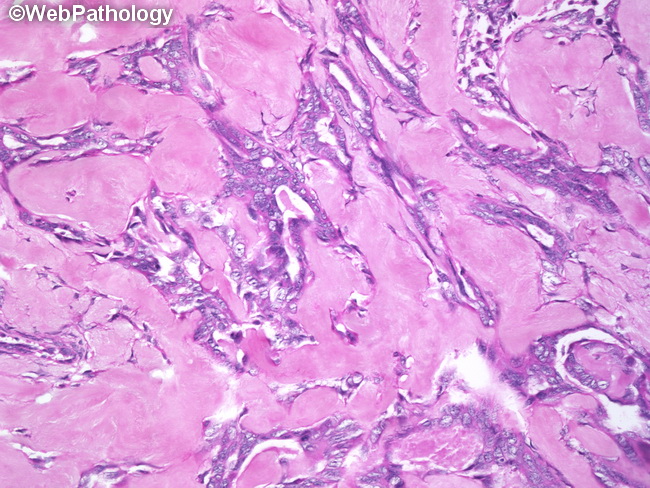Synovial Sarcoma : Molecular Genetics


Comments:
Virtually all cases of synovial sarcomas show a balanced reciprocal chromosomal translocation t(X;18)(p11.2;q11.2) which causes fusion of SS18 gene (also known as SYT gene) on chromosome 18 with either SSX1 (two-thirds of cases, usually biphasic synovial sarcomas) or SSX2 (one-third of cases, usually monophasic fibrous type) on chromosome X. Rarely, the partner gene is SSX4 (also on Xp11.2). Complex translocations involving other chromosomes have been observed in less than 10% of synovial sarcomas. SS18-SSX1 and SS18-SSX2 gene fusions are mutually exclusive. The gene fusions found in metastatic deposits are identical to that seen in the primary tumor. The exact function of SS18-SSX fusion protein is not yet known, but it appears to dysregulate gene expression. There is upregulation of a number of genes, including IGFBP2, IGF2, and ELF3. In addition, there is upregulation of TLE1 which is involved in Wnt signaling pathway. The SS18-SSX hybrid protein can be detected immunohistochemically. The translocation t(X;18) can be detected with RT-PCR, FISH, or conventional cytogenetics. The currently preferred method is FISH analysis on formalin-fixed paraffin-embedded tissue using a dual-color break-apart SS18 probe (explained in the next slide). The molecular diagnostic techniques are particularly useful in distinguishing monophasic fibrous synovial sarcomas and poorly-differentiated synovial sarcomas from other spindle cell sarcomas and small round blue cell tumors respectively. The image shows epithelial component of a biphasic synovial sarcoma with extensive hyalinization of the stroma.



